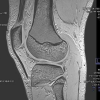The purpose of the spinal injection is to ease the pain you are experiencing. The procedure involves the injection of substances into or around a joint, nerve root or epidural space.
There are two medications used in a spinal injection:
- Local anaesthetic - temporarily numb the area
- Corticosteroid - works by reducing the inflammation

What are the benefits?
Spinal injections are used to help improve your symptoms by reducing swelling and inflammation.
The effects of the injection can last up to 3-6 months.
The injection can be repeated if it is effective. The injection may not relieve the symptoms in everyone. Your specialist will discuss alternative options with your if this is the case.
What are the risks?
Spinal injections are commonly performed and are generally safe. However, with any procedure there is always an element of risk.
Risks include:
- Mild discomfort at the injection site
Other reported risks although these are rare:
- Infection
- Bleeding
- Bruising (haematoma)
- Headaches
- Increased pain in the treated area
Extremely rare risks include:
- Spinal nerve injury
- An allergic reaction
- Spinal cord injury
- Dural puncture (epidural injections only)
Cervical spine (neck injections):
- Extremely small risk of a stroke (less than 1 in a 1000)
Corticosteroid side effects:
- Hot flushes
- Feeling sick
- Mild abdominal pain
- Light menstrual bleeding for woman
- Temporary rise in blood glucose levels (if you have poorly controlled diabetes, please notify the Radiologist)
These should all settle in a few days. Severe complications are rare, but the consequences can be serious.
Where can I get a spinal injection done?
We have multiple locations available for spinal injection throughout New Zealand;
Please select your location belowon the right to contact us
















